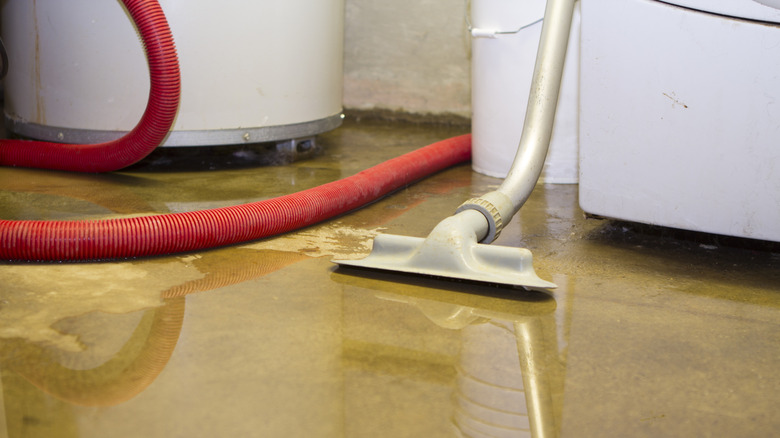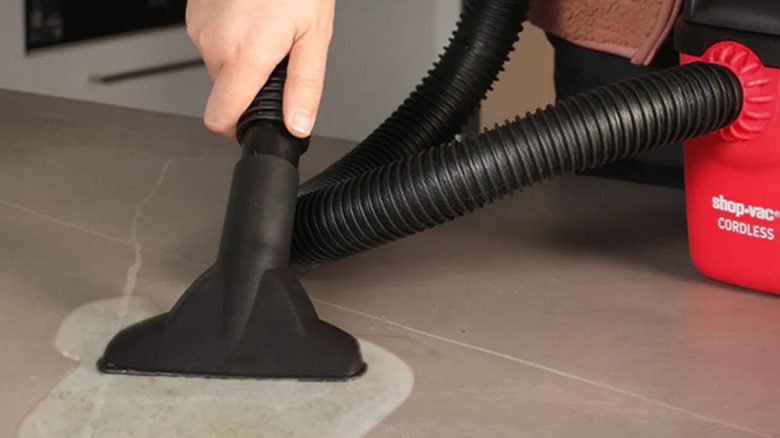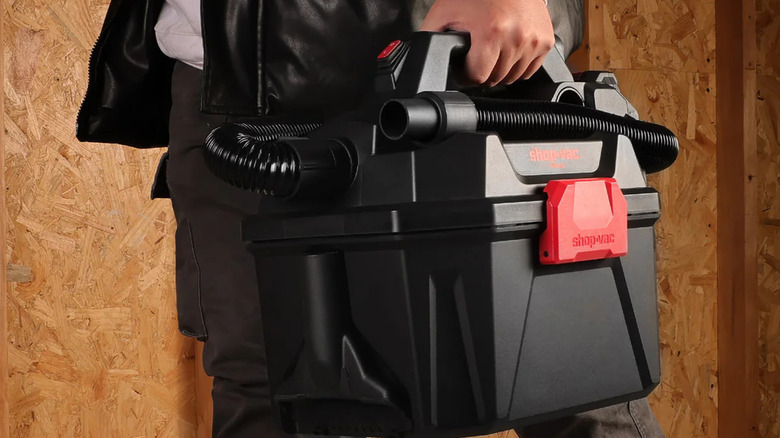How To Use A Shop-Vac For Water
If you've ever spilled a big bucket of water or dealt with a surprise flood in your basement, you know that a regular mop just won't cut it when it comes to cleanup. Even an advanced robot vacuum might fail with such a high amount of water. That's where a Shop-Vac steps in like a total lifesaver. While some people think these machines are just dust and debris suckers, these incredible wet/dry vacuums can actually handle water removal like a champ. But only as long as you know how to use them properly.
So, before you plug in your Shop-Vac and get busy, there are a few important things to know. First things first: Not every Shop-Vac is built to deal with liquids, so you should double-check your model before starting. Look for anything that says "wet/dry" in the manual or on the label. Using the wrong vacuum for water can damage the motor or, worse, put you in a dangerous situation, and nobody wants that.
Setting up your Shop-Vac the right way
Once you've confirmed that your Shop-Vac can handle water, it's time to check your electrical plug type to ensure it is GFCI. This is super important for safety, especially since you're mixing electricity and water. Then, take out any paper filters or vacuum bags meant for dry use with the vacuum. Some Shop-Vacs use a foam sleeve during wet use, while others don't need any filter at all. Just follow what your manual says.
Now, grab the flat wet nozzle, which is especially designed for puddles and smooth surfaces like floors. Work slowly, moving the nozzle across one section at a time to make sure you're collecting all the water. As you vacuum, you'll notice the sound of the motor starts to change. That's your cue that the tank is full, and we suggest turning it off right away. While most Shop-Vacs have a float valve that cuts off suction when the tank fills up, it's still good to power it down manually just to be safe.
What should you always do after cleaning up your watery mess
Draining the water collected in the vacuum is your next step, and here's where it gets heavy. Water weighs almost 8.5 pounds per gallon, so even a 10-gallon tank can be a workout after you are done with all the cleaning. Some vacuums come with a built-in pump to drain the water automatically, but if yours doesn't, you'll need to empty it manually. You need to make sure to pour the water into a proper drain or out in the yard; however, avoid dumping any large debris that could clog things up. You may need to dispose of that debris first.
Once the tank is empty, give it a quick rinse using warm water and a bit of bleach or dish soap to keep mold and bacteria away. It's a good habit to do a deeper clean once a month too. Let everything dry out completely, especially the vacuum hose — hanging it vertically helps water drain better. A dry vacuum is a happy vacuum.


